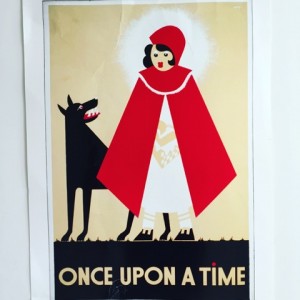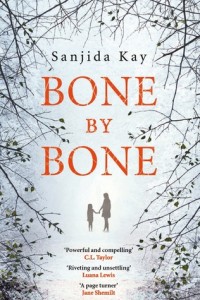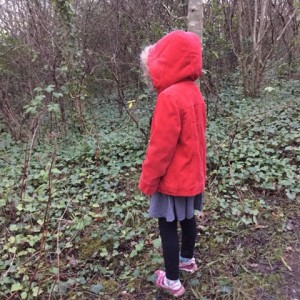Fairytales
 Once upon a time…how comforting is this timeless beginning, immediately sending us back to our childhoods, tucked up in bed and listening to a story. Narrative is part of the human psyche, the way we explain the world to ourselves and each other.
Once upon a time…how comforting is this timeless beginning, immediately sending us back to our childhoods, tucked up in bed and listening to a story. Narrative is part of the human psyche, the way we explain the world to ourselves and each other.
It’s perhaps no surprise that recent research, published in the Royal Society Open Science Journal, should show that fairy tales are ancient, at least one dates back to the Bronze Age, whilst others, such as Beauty and the Beast and Rumplestiltskin, are over 4,000 years old.
But though they may begin in such a cosy way, make no mistake – fairy stories are dark tales of misogyny, social climbing, child abuse and infanticide. If narrative is part of our soul, fairy stories are cautionary tales about human nature.
I’ve long been fascinated by fairy tales: I wanted to study them for my PhD on evolutionary biology, but since the science used in this research (the phylogenetic comparative method!) wasn’t advanced enough, I settled on the psychology of chimpanzees. Writing my first psychological thriller, Bone by Bone, I’ve returned to my love of fairy stories.
 In Bone by Bone, Laura, newly divorced and relocated to Bristol, learns that her nine-year-old daughter, Autumn, is being bullied at her primary school. When no one takes Laura seriously, she tries to protect Autumn from the bully – and makes the situation much, much worse.
In Bone by Bone, Laura, newly divorced and relocated to Bristol, learns that her nine-year-old daughter, Autumn, is being bullied at her primary school. When no one takes Laura seriously, she tries to protect Autumn from the bully – and makes the situation much, much worse.
Thrillers are usually ultra-modern, particularly in my genre, that of domestic noir, which is deeply suburban and middle-class. But the appeal of a grim, twisted tale that is lodged in our collective, cultural heritage is hard to resist. I’ve mentioned fairy tales overtly in Bone by Bone:
Most of the vegetables in the allotments had died back but one, tended by a Jamaican man, was full of squash. They lay among the dying leaves, rimmed with frost, huge, orange and alien, half hidden by the mist. They reminded her of the fairy stories she’d read as a young child, of white horses and gold carriages that turned into mice and pumpkins on the stroke of midnight.
There is also a leit motif running through Bone by Bone, which is based on Little Red Riding Hood. Autumn has to walk through some allotments and then an urban nature reserve to get to school. In the midst of inner city Bristol, surrounded by people, there’s a tiny fragment of wilderness and it’s here she’s in the most danger.
Autumn imagined the girl, with long dark hair in plaits and a red cape, running through the wood and stopping because she hears something: soft paws crushing damp moss, an animal breathing. She runs on. She’s frightened. She knows what will happen is inevitable. All the while the wolf is keeping pace with her, watching her, its pink tongue lolling over its sharp, white teeth. Waiting for its chance.
 There are, of course, numerous interpretations of fairy tales. At the most basic, I wanted to create a subconscious connection between Autumn – who is wearing the red coat that her grandmother bought her when she does not come home from school – and the chill heart of the original tale.
There are, of course, numerous interpretations of fairy tales. At the most basic, I wanted to create a subconscious connection between Autumn – who is wearing the red coat that her grandmother bought her when she does not come home from school – and the chill heart of the original tale.
Little Red Riding Hood was written down by Charles Perrault in 1697 and he’s clear about the meaning: it’s about the danger of the forest, of not obeying one’s mother and, as Perrault said, ‘children…do very wrong to listen to strangers.’
I’m not the first thriller writer to borrow from these ancient stories. Julia Heaberlin in Black Eyed Susans weaves in themes from various tales, in spite of her novel being set in unfairy-tale-like Texas. The story is narrated by Tess, who is in her late thirties, as well as by herself as the teenage Tessie. Tessie was abducted by a serial killer and found alive, buried in a shallow grave with the remains of three other girls. ‘Snow White poisoned. Cinderella enslaved. Rapunzel locked up. Tessie, dumped with bones. Some monster’s twisted fantasy,’ Tessa tells us. Tessie even grew up in a castle constructed by her grandfather, which the locals nicknamed Grimm:
The house sits topsy-turvy on the crest of a hill…At the top, I leaned against the curlicued railing to survey the flat, endless Texas landscape and the stars of my kingdom. I played my piccolo to the night birds. The air rustled my thin white cotton nightgown like I was a strange dove alit the top of a castle. It sounds like a fairy tale, and it was.
Another of my favourite thrillers, Pretty Is by Maggie Mitchell, is a multi-layered novel with subtexts of abduction and the selling of one’s soul. Lois and Carly-May are just twelve years old when they’re abducted, driven across the country, and imprisoned in a remote, isolated hunting lodge for two months. As adults, they still have not come to terms with why they were taken. Decades after their ordeal, they meet, but will the reasons why they were first kidnapped be revealed?
They were glad to have us back, of course. But nothing was the same. It was as if we had returned from the dead, as if we were tainted somehow. Our unlikely survival made us guilty. We must have sold our souls, I could see them thinking—or worse.
In spite of the evil within both fairy tales and thrillers, as readers we all desire closure – an emotional release; even if, as in many of the best books, writers cannot give us an ending that is happy ever after.
—
 Selected by Jake Kerridge, Sunday Express, as a Thriller you won’t want to miss in 2016
Selected by Jake Kerridge, Sunday Express, as a Thriller you won’t want to miss in 2016
How far would you go to protect your child?
When her daughter is bullied, Laura makes a terrible mistake…
Laura is making a fresh start. Recently divorced and relocated to Bristol, she’s carving a new life for herself and her nine-year-old daughter, Autumn. But things aren’t going as well as she’d hoped. Autumn’s sweet nature and artistic bent are making her a target for bullies.
When Autumn fails to return home from school one day Laura goes looking for her and finds a crowd of older children taunting her little girl. In the heat of the moment, Laura is overcome with rage and makes one terrible mistake. A mistake that will have devastating consequences for her and her daughter…
Sanjida Kay’s debut thriller, Bone by Bone, is published by Corvus Books. She lives in Bristol with her husband and her daughter.
Find out more about Sanjida on her website http://www.sanjida.co.uk/
Like her on Facebook www.facebook.com/SanjidaKayAuthor
Follow her on Twitter: Sanjida Kay
Category: Contemporary Women Writers, On Writing
Comments (6)
Trackback URL | Comments RSS Feed
Sites That Link to this Post
- Re-Imagining Feminine Desire: A New Face for Myth and Fairytales | Kore Desires | October 31, 2016
- Summer holiday thrillers | Sanjida Kay | July 17, 2016
- Blog tour! | Sanjida Kay | March 20, 2016
- In the Media, March 2016, part one | The Writes of Woman | March 6, 2016
























Dear Idellah, Thank you! I find fairy tales inspiring and fascinating too, as you can probably tell! Sanjida
Thank you for this post. I’ve always been fascinated with the symbolism of fairytales I feel inspired!